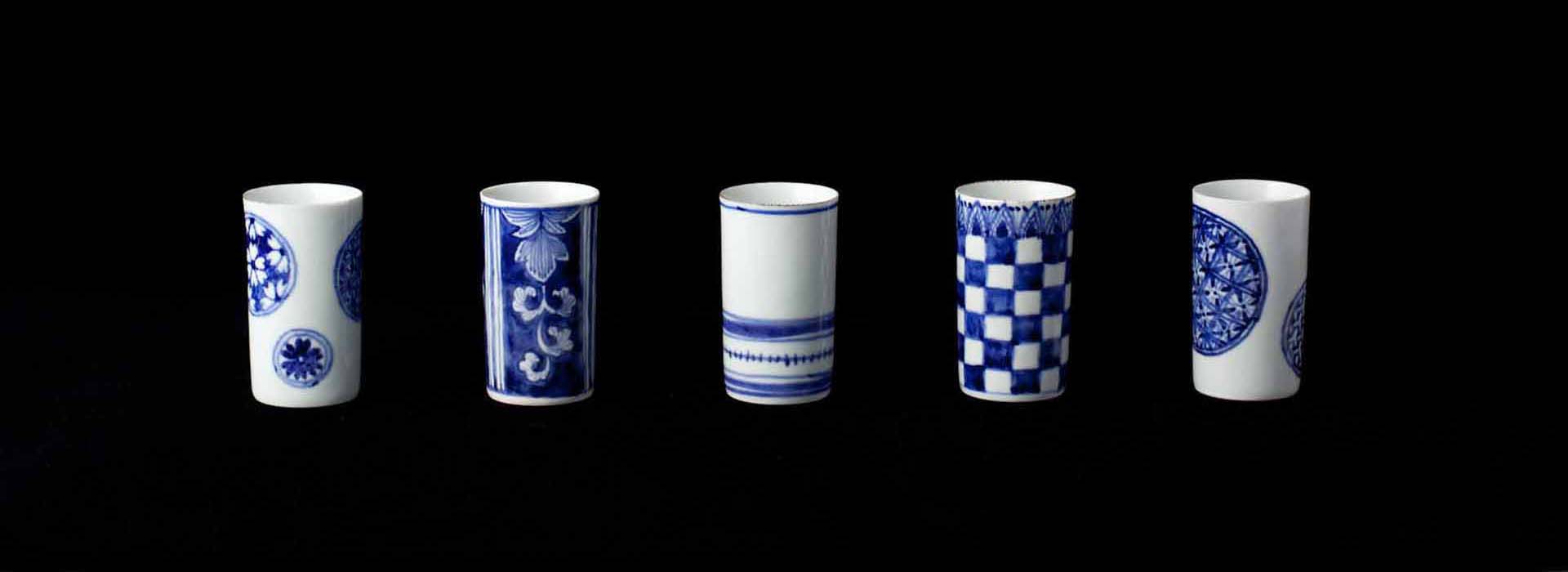
陶芸家
1947年生まれ。1985年より5年間、江戸時代から続く大阪の道具商「谷松屋戸田商店」に勤める。そこで数々の名品を実際に拝見する機会に恵まれ、その貴重な体験を通して1991年、陶芸の道へ。2004年、軽井沢に「志音窯」を構える。オリジナルの創作活動のほか、尾形乾山や北大路魯山人の写しにも精力的に取り組む。
【近年の活動】
2006年以降、京都・野村美術館にて2年に1度(偶数年の11月)個展を開催。
自宅のギャラリーでも作品を公開。
2020年11月10日(火)〜11月22日(日)野村美術館で個展を予定。
【個展】
1997
「田端志音作陶展」サン・ギャラリー住恵(愛知)
「田端志音展」お茶道具・青芳堂(東京)
2001
「田端志音作陶展」サン・ギャラリー住恵(愛知)
「琳派のいろかたち」ギャラリー百屋(兵庫)
「田端志音作陶展」ギャラリー堂島(大阪)
2002
「田端志音作陶展」サン・ギャラリー住恵(愛知)
「田端志音作陶展」海老屋美術店(東京)
「田端志音陶展」酉福(東京)
「田端志音陶展」野村美術館(京都)
2003
「田端志音作陶展」ざくろ坂ギャラリー・一穂堂(東京)
「琳派の陶展〜乾山写、仁清写の鮮やかな器〜」ギャラリー上方銀花(大阪)
「田端志音作陶展」サン・ギャラリー住恵(愛知)
2004
「田端志音 やきもの展〜琳派を今に生かす〜」銀座・一穂堂サロン(東京)
「田端志音作陶展」サン・ギャラリー住恵(愛知)
2005
「田端志音作陶展」ギャラリー堂島(大阪)
「田端志音作品展」野村美術館(京都)
「田端志音作品展」アートサロン・コカド(東京)
2006
「田端志音作品展」野村美術館(京都)
2007
「田端志音茶陶展」大丸心斎橋店 美術画廊(大阪)
「田端志音陶芸展」まるひろ川越店 美術画廊(埼玉)
2008
「田端志音作陶展 〜百人一首〜」野村美術館(京都)
2010
「田端志音作陶展 〜お茶時の器〜」野村美術館(京都)
2012
「田端志音 〜通〜」野村美術館(京都)
2013
「田端志音 和気の器」日本料理加瀬(名古屋)
2014
「田端志音 温楽」野村美術館(京都)
2015
「田端志音 琳派のかおり」柿傅ギャラリー(東京)
「田端志音 器の大中小」アートギャラリーOlus・Kyo(京都)
2016
「田端志音 和魂洋彩」ザ・クイーンズ・フィニッシングスクール(兵庫)
「田端志音 ノトキ」万平ホテル(長野)
「田端志音作陶展 和の器」野村美術館(京都)
2017
「田端志音 器の向こう」万平ホテル(長野)
2018
「田端志音 器のしつど」万平ホテル(長野)
「田端志音作陶展 本歌と写し」野村美術館(京都)
2019
「田端志音作陶展 万窯のはじまり」万平ホテル(長野)
Potter
Born in 1947, she worked at Tanimatsuya Toda Shoten, an antique art dealer running since the Edo period in Osaka for five years from 1985. There, she was blessed with the opportunity to actually see many masterpieces, and through this precious experience, she became a ceramic artist in 1991. In 2004, she established “Shiongama” in Karuizawa. In addition to creating original works, she is also actively involved in utsushi(*) of Kenzan OGATA ,Rosanjin KITAOJI and so on.
【Recent activities】
Since 2006, she has held a solo exhibition at Nomura Art Museum on November in Kyoto once every two years.
Her works are also shown at her private gallery.
【Solo Exhibition】
2019
“Manyo no Hajimari”, Manpei Hotel, Nagano
2018
“Utsuwa no Shitsudo”, Manpei Hotel, Nagano
“Honka to Utsushi”, Nomura Art Museum, Kyoto
2017
“Utsuwa no Mukou”, Manpei Hotei, Nagano
2016
“Wakonyousai”, The Queens Finishing School, Hyogo
“NOTOKI”, Manpei Hotel, Nagano
“Wa no Utsuwa”, Nomura Art Museum, Kyoto
2015
“Rinpa no Kaori”, Kakiden Gallery, Tokyo
“Utsuwa no Dai Chu Sho”, Art Gallery Olus Kyo, Kyoto
2014
“Ongaku”, Nomura Art Museum, Kyoto
2013
“Waki no Utsuwa”, Nihon Ryori KASE, Nagoya
2012
“Tu”, Nomura Art Museum, Kyoto
2010
“Ochaji no Utsuwa”, Nomura Art Museum, Kyoto
2008
“Hyakunin Isshu”, Nomura Art Museum, Kyoto
2007
“Shion Ceramics Exhibition”, Shinsaibashi DAIMARU Art Gallery, Osaka
“Shion Ceramics Exhibition”, Kawagoe MARUHIRO Art Gallery, Saitama
2006
“Shion Ceramics Exhibition”, Nomura Art Museum, Kyoto
2005
“Shion Ceramics Exhibition”, Gallery DOJIMA, Osaka
“Shion Ceramics Exhibition”, Nomura Art Museum, Kyoto
“Shion Ceramics Exhibition”, Art Salon KOKADO, Tokyo
2004
“Yakimono ~ Rinpa for the present”, IPPODO Salon, Tokyo
“Shion Ceramics Exhibition”, Sun Gallery SUMIE, Aichi
2003
“Shion Ceramics Exhibition”, Zakurozaka Gallery IPPODO, Tokyo
“Rinpa Ceramics Exhibition ~vivid vessel of Kenzan Utsushi, Ninsei Utsushi”, Gallery Kamigata Ginka, Osaka
“Shion Ceramics Exhibition”, Sun Gallery SUMIE, Aichi
2002
“Shion Ceramics Exhibition”, Sun Gallery SUMIE, Aichi
“Shion Ceramics Exhibition”, Ebina Bijutsu Ten, Tokyo
“Shion Ceramics Exhibition”, Yuhaku, Tokyo
“Shion Ceramics Exhibition”, Nomura Art Museum, Kyoto
2001
“Shion Ceramics Exhibition”, Sun Gallery SUMIE, Aichi
“Color and Shape of Rinpa”, Gallery Momoya, Hyogo
“Shion Ceramics Exhibition”, Gallery DOJIMA, Osaka
1997
“Shion Ceramics Exhibition”, Sun Gallery SUMIE, Aichi
“Shion Solo Exhibition”, SEIHODO, Tokyo
(*)“Utsushi” is a well-established concept in the world of Japanese ceramics. It’s an idea unique to Japan: it can’t be translated by words like “copy” or “epigone.” The Kano school, the most influential artistic school in the history of Japanese art, fostered many professional artists in their studios by teaching their techniques to people with direct blood connections, and they left us many superb works of art. The Rinpa school, which appeared later, is different in this respect. Rather than direct transmission of techniques, they were able to accomplish a transmission across time and space, without blood connection or even contact. It is during the time of the Rinpa school that we begin to see the emergence of the notion of utsushi.
In line with the meaning of the word [to copy], one copies the form of another piece. However, if a work is simply an imprecise reproduction, one can’t call it utsushi. Many artists polish their skills by making reproductions, and learn a lot about their predecessors by studying their work. However, for something to be an utsushi, which has the artist’s unique expressions, it has to extend beyond being a mere reproduction. Utsushi, as original artistic expressions, ought to offer up new ideas, display the creator’s individuality, and connect the past and future through the “present”.
